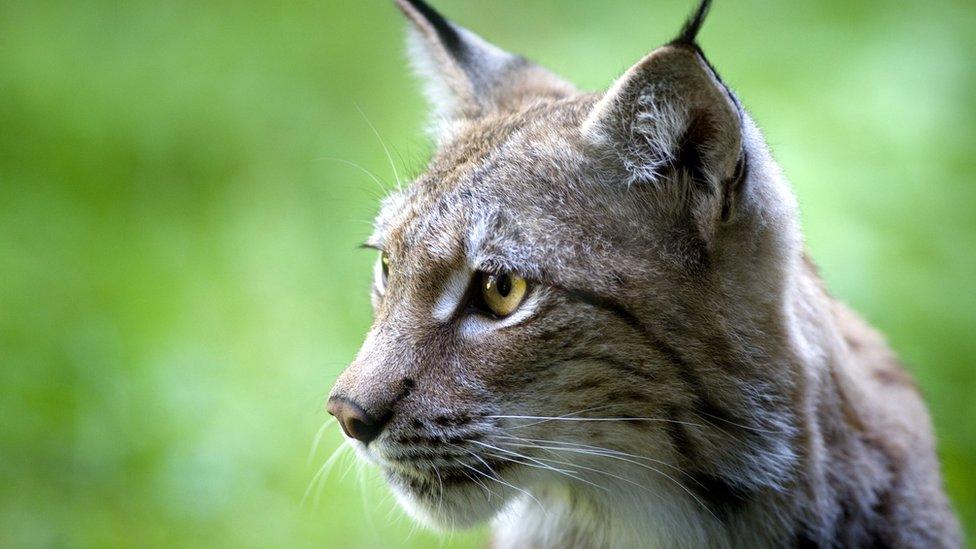Wolves and brown bears among animals making a comeback in Europe
- Published
- comments
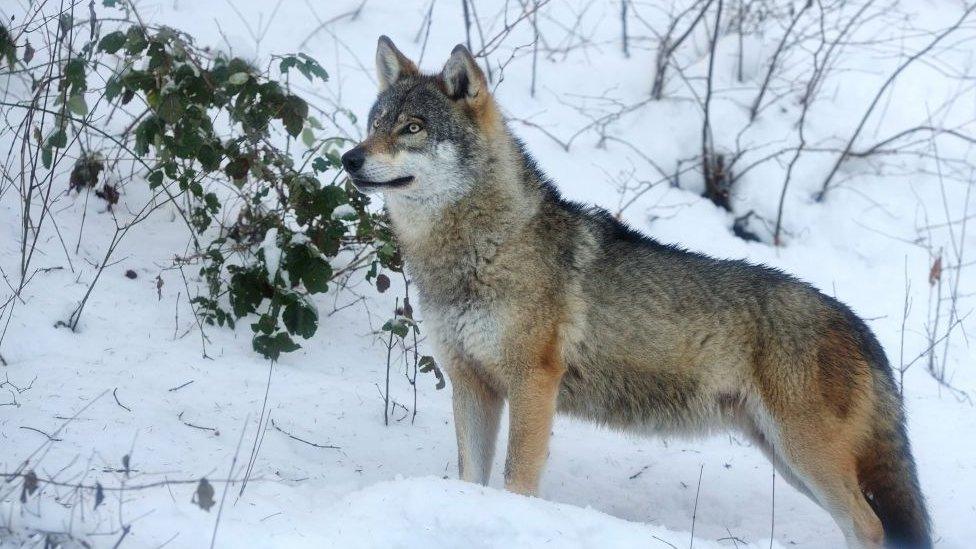
Grey wolves are just some of the mammals that have made a return to Europe
Wolves, bears and beavers are just some of the species making a comeback across Europe a new report has said.
The European Wildlife Comeback report, commissioned by Rewilding Europe, has found that the populations of some European wildlife species have grown - both in size and geographical range - over the last 40 to 50 years.
Others include the Eurasian beaver, European bison, Eurasian brown bear, grey wolf, humpback whale, and white-tailed eagle.
Put together by ZSL (Zoological Society of London), BirdLife International and the European Bird Census Council, the report looks at 50 European wildlife species.
The report says the main reason for recovery is human intervention, this includes legal protection, changes in land use and conservation efforts like rewilding.
What wildlife has made a comeback?
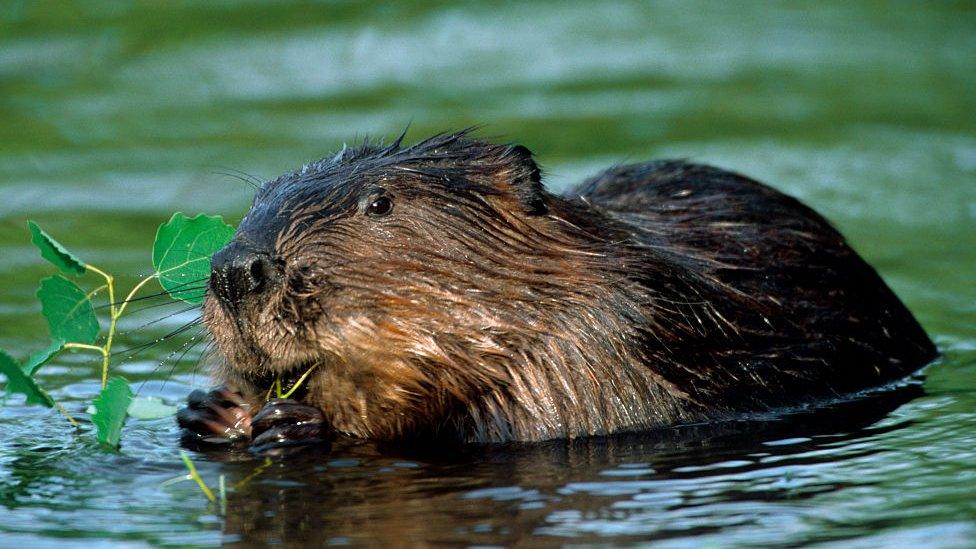
The Eurasian beaver has made the strongest comeback thanks to legal protection and conservation effors
Of the different mammal species looked at in the report, the Eurasian beaver, grey seal, and European bison seem to be making the strongest comeback.
The Eurasian beaver increased its population's geographical range by a massive 835% since 1955, with a 16,000% increase in how widely found the species is now compared to 1960.
In the UK beavers have been reintroduced across the country and Eurasian beavers have special legal protection in Scotland and England.
There are also more grey wolves across Europe than in previous years. The populations have risen to at least 17,000, with numbers surging upwards by 1,871 percent between 1965 and 2016.
The reason for this increase is thought to have come about due to a reduction in mountain farming. Previously wolves would have been hunted to protect livestock like sheep, but now there is compensation to farmers for loss of livestock as well as more direct protection for sheep, like fences.
The report also showed that since 1960, populations of brown bears have increased by 44% driven by better legal protection.
The UK has yet to reintroduce predators like wolves and bears, but the idea of reintroducing wolves to Scotland has long been discussed.
It's been put forward as a way of controlling deer numbers which are responsible for munching and destroying young trees.
However not everyone thinks it would be a good idea and the Scottish government has said it has "no plans to reintroduce lynx, wolves, bears or any other large carnivore species into Scotland".
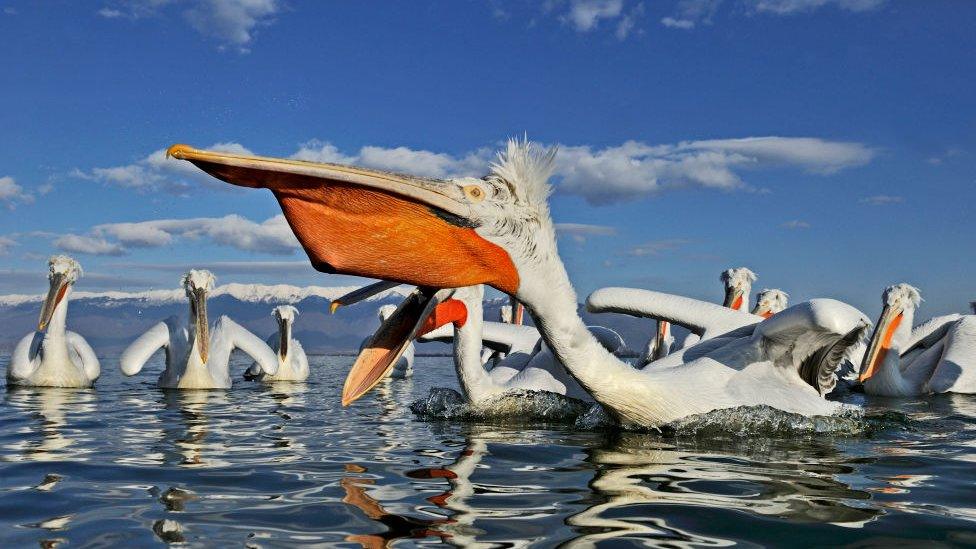
When it comes to birds; barnacle goose, griffon vulture, great white egret and Dalmatian pelican are also recovering well.
This may be partly due to new laws which have helped to give more legal protection, as well as changes to land use.
They have also been helped by conservation efforts, including rewilding.
The UK has previously said one million species are on the brink of extinction but this report gives a bit of good news.
Lead author for the 2022 Wildlife Comeback Report, ZSL (Zoological Society of London)'s Sophie Ledger: "Much of the vital work monitoring global biodiversity trends and evaluating species' extinction risks often highlights the negative impacts of pressures such as habitat loss and climate change on species.
"However, this report gives cause for optimism and shows that given a chance, and with well-placed conservation efforts, wildlife can recover."
- Published6 September 2020
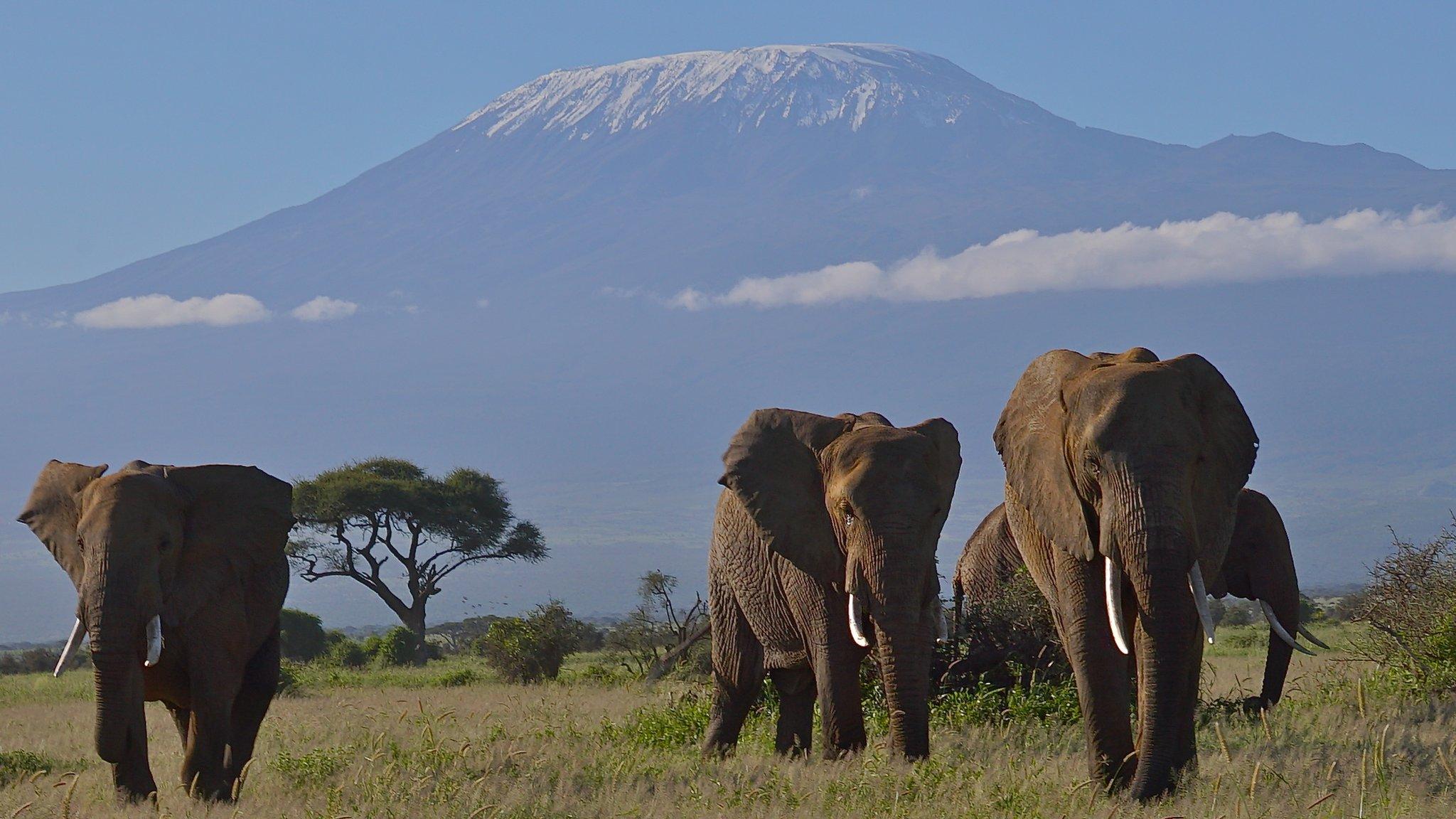
- Published19 January 2021
